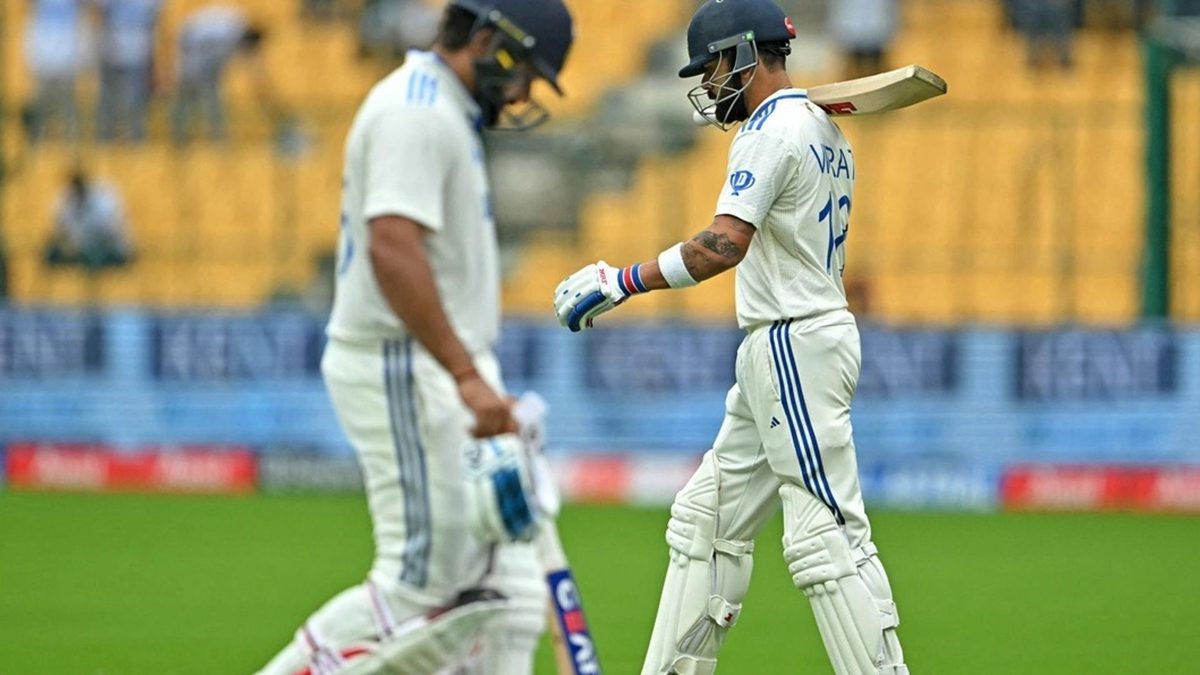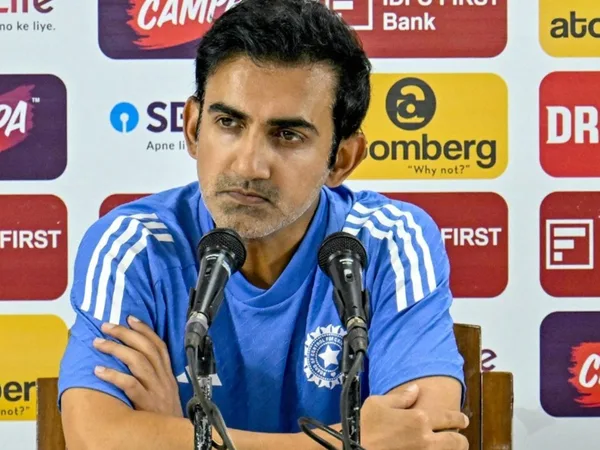
India collapsed to 46 all out, their lowest Test match total on home soil, against New Zealand at Bengaluru, during a phase of play where nothing went India’s way.
“Misjudgement” in hindsight
The India bowling attack boasts of enough depth for them to choose between three seamers and three spinners at home. Against England, they based their attacks around spin, with the seamers bowling in short bursts. However, against Bangladesh, they switched to three seamers along with R Ashwin and Ravindra Jadeja.
After a day’s cricket was lost at Bengaluru, India left out fast bowler Akash Deep for left-arm wrist-spinner Kuldeep Yadav. Rohit Sharma won the toss and opted to bat (though he understood that “we do understand it [the pitch] will be sticky to start with”), but Tom Latham admitted that he would have done the same as well. Neither seemed too fussed about the pitch.
India, of course, had to bat first once they picked three spinners. Both decisions – or decision, as one was almost certainly determined by the other – backfired spectacularly. On another day, India might have survived the initial storm.
“A misjudgement,” admitted Rohit later. “I couldn’t read the pitch well”.
The conditions
The pitch turned out to be completely different from the captains’ readings – and that is an understatement. The movement was unusually extravagant, while the bounce was unusually steep. Combine both factors, and it is not difficult to understand why survival was difficult.
Early aggression
“We wanted to put runs on the board,” said Rohit at the toss. “You lose the entire day and have four days to play. A lot can happen over the four days as well and you want to get the result as much as possible.”
Fair enough. India needed the 12 points from a home Test. For that, they needed 20 wickets. For that, the bowlers needed time. For that, the batters needed to score quickly. And Rohit and Yashasvi Jaiswal are both capable of taking the attack to the opposition early on.
It mostly comes off for India, most recently when they demolished Bangladesh at Kanpur. It has worked for England for some time. It used to work for Australia in the 2000s. It works for other teams too.
But... not in conditions as testing as these, perhaps they could have batted differently after two very testing overs from Tim Southee and Matt Henry. In the third over, Jaiswal went for an expansive stroke and was beaten. In the fifth over, Rohit poked at one from Southee, and the ball beat the outside edge. In the sixth, Henry beat Jaiswal twice.
At this point, the India openers could have opted to lie low and let the storm pass. Instead, Rohit decided to step out, presumably to force Southee to alter his length, missed the line, and was bowled.
Not too long afterwards, Sarfaraz Khan – recalled to the side for the injured Shubman Gill – tried to bunt one to the straight boundary but could not keep it on the ground. Early stroke-play is typical of Sarfaraz in domestic cricket, but the state-level mid-off fielders seldom fling themselves on the ground to take one-handed stunners. Devon Conway did.
It was a curious approach, more so because after the day’s play, Rohit told the media that “it won’t help seamers much after the first session or so.” Perhaps they could have bided their time.
Kohli’s promotion
True, the tall, young Will O’Rourke got Virat Kohli with a snorter that took off abruptly off a length and would have got most batters out, but what was Kohli doing out there at one drop?
India had replaced Gill with Sarfaraz, but they needed someone to bat oat three. After the day’s play, Rohit told the media that Kohli had himself opted to bat at three instead of KL Rahul, a bona-fide opener who bats at six these days.
Kohli came into the Test match with 97 runs at 19.40 at No.3. After today’s duck, that dropped to 16.17. India could have promoted Rahul, but he averages 17.60 from five innings at that position. As things turned out, Rahul batted at No.6 – and made a duck.
It was a bold call that will be debated over the days to come, but the alternative was not the glaringly superior correct option either.
New Zealand’s bowling... and fielding
Once they got a whiff of the conditions, the New Zealand fast bowlers grabbed the opportunity with both hands. All three seamers used the wobble-seam to dart the ball around, while the Canterbury pair of Henry, six foot two, and O’Rourke, six foot four, made exceptional use of the extra bounce.
Several India wickets were avoidable... but some were not. Kohli got an excellent ball from O’Rourke, while Henry produced two balls that Ashwin and Rishabh Pant could not have left.
The fielding unit, historically among the finest in the world, provided excellent support. At least four catches – by Glenn Phillips, Conway, Henry, and substitute fielder Michael Bracewell – were remarkable. In fact, had Blundell not dropped Pant on seven (Pant made 20), India’s lowest total of 36 might have been under threat.
In the end, everything New Zealand did worked, while nothing went India’s way. But then, that is perhaps a necessary condition for a sub-50 total.
Follow Wisden for all cricket updates, including live scores, match stats, quizzes and more. Stay up to date with the latest cricket news, player updates, team standings, match highlights, video analysis and live match odds.








